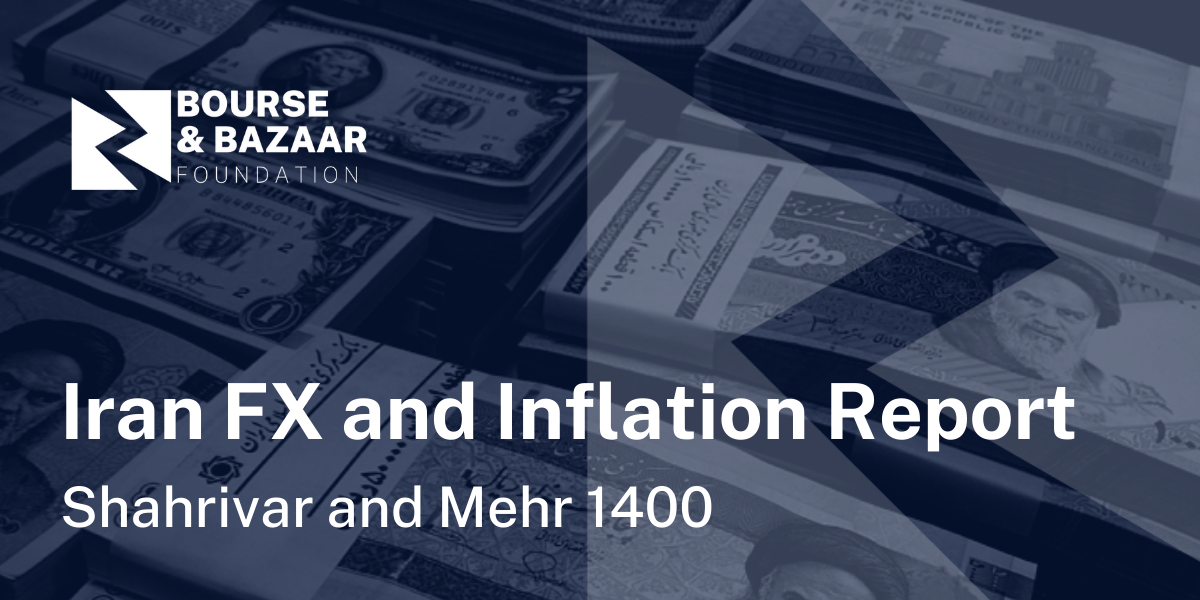Iran FX and Inflation Report - Mordad 1400 (July 23 – August 22)
New lockdowns were imposed during the Iranian calendar month of Mordad 1400 (July 23 – August 22, 2021) to slow the spread of COVID-19, meaning that there were interruptions in the foreign exchange market. Still, despite exchange bureaus being closed for stretches, the rial continued to weaken, with the free-market exchange rate hitting its highest level so far this year. Analysts believe the deteriorating situation in Afghanistan, an important source of hard currency for Iran, is only partly to blame.
___STEADY_PAYWALL___
In the foreign exchange market, the free-market rate began the period at IRR 251,000, rose by an average daily rate of 0.72 percent, and reached IRR 275,000 by the end of the period, which is the highest level since November 2020. The NIMA rate started the period at IRR 223,681, grew by an average daily rate of 0.17 percent, and ended the period at IRR 230,084.
According to data released by the Statistical Center of Iran, consumer price index (CPI) rose to 337.8. The monthly inflation rate was 3.18 percent and the 12-month inflation rate reached a record high of 45.2 percent. The point-to-point inflation rate was 43.2 percent, indicating that households spent 43.2 percent more on the same basket of goods and services compared with the same month in the previous year. Goods prices rose at a monthly rate of 3.91 percent. Durable goods experienced their highest monthly inflation since October 2020 with a price growth of 4.26 percent. Price of non-durable goods rose by 4.04 percent and semi-durable goods by 2.64 percent.
Various reports suggest that Taliban’s ascendency during the Iranian calendar month of Mordad, beginning with the takeover of Herat, may have made a minor contribution to the rising exchange rate. In an interview, economist Hamidreza Jeyhani explained that Dubai, Soleymaniyeh, Herat, and Istanbul have a critical role in determining the exchange rate in the free market as they are sources of hard currency for exchange bureaus in Iran. Given the situation in Herat, exchange bureaus need to find another way of sourcing hard currency and this has increased costs and hence the exchange rate, at least somewhat. Analyst Kambiz Afsari, in an interview with Tejarat News, noted that there has been increased demand for foreign currency in Iran in recent weeks, and the upward trend in the exchange rate has not been solely due to the situation in Afghanistan.
Economist Teymour Rahmani attributed the rial’s recent slide to negative sentiments that began to emerge in the Spring. Increased demand for hard currency and increased liquidity are combining to create upward pressure on inflation and exchange rates. On inflationary expectations, he shared that the current inflationary expectations are fundamental due to the consequences of shortcomings regarding the government’s foreign currency revenue, which all lead to printing money and increasing liquidity. Also, due to lack of supply of foreign currency, imports have fallen and there’s a gap between demand and supply of goods, which also results in inflation. Therefore, he believes adjustments in inflationary expectations will require fundamental changes such as lifting sanctions and contractionary policies.
Economists at the Monetary and Banking Research Institute (MBRI) of Iran’s central bank also highlighted a connection between reduced production at export-oriented firms and the exchange rate. In managing electricity supply, the government opted to prioritise households, leaving factories in the dark for hours. Reduced output related to the power cuts has contributed to both goods inflation and likely reduced total export volumes, creating a supply pressure in the foreign exchange market.




